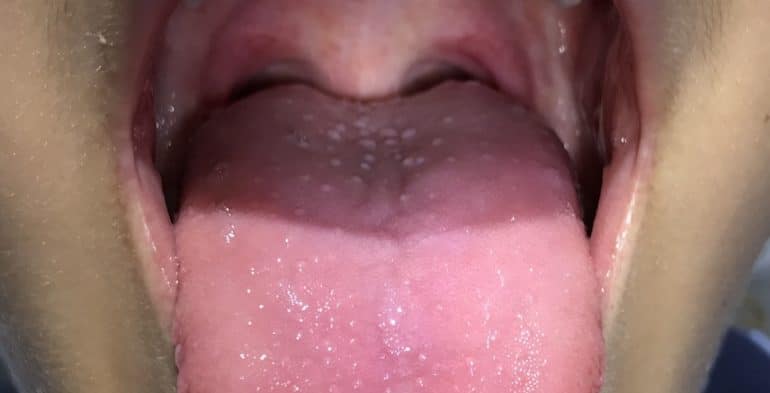
Scarlet fever, also called scarlatina, is an infection that causes a blotchy, pink-red rash. It’s most common in young children, but can affect people of any age.
It isn’t usually serious and can be treated with antibiotics. Once you’ve had it, you’re unlikely to get it again.
Symptoms of scarlet fever
Symptoms of scarlet fever develop within a week of being infected.
Early signs include a sore throat, a headache, a high temperature (38.3C/101F or above), swollen glands in the neck and being sick.
This may be followed by a rash on the body, a red face and a white or red tongue:
Scarlet fever Rash
The scarlet fever rash:
- usually starts on the chest or tummy, before spreading to other areas
- is made up of pink-red blotches that may join up
- feels like sandpaper (this may be the most obvious sign in someone with dark skin)
- may be brightest red in body folds, such as the armpits or elbows
- turns white if you press a glass on it
The rash doesn’t usually spread to the face, but the cheeks may turn very red and this may look a bit like sunburn.
Affect on the tongue
Sometimes a white coating may form on the tongue.
This peels away after a few days, leaving the tongue red and swollen.
This is known as a “strawberry tongue”.
When to see your GP
See your doctor or call your surgery as soon as possible if:
- you think your child has scarlet fever
- you have symptoms of scarlet fever
- you or your child have been treated for scarlet fever but the symptoms haven’t improved after a week or are getting worse
Treatment with antibiotics is recommended to reduce the length of time the infection is contagious, speed up recovery and reduce the risk of any further problems.
Your doctor can usually diagnose scarlet fever by looking at the rash. Sometimes they may use a cotton bud to remove a bit of saliva from the throat so it can be tested.
Treatment for scarlet fever
Your GP will prescribe antibiotic tablets (or liquid for young children) to take for five or 10 days.
You or your child should start feeling better after a day or two, but make sure you finish the whole course of treatment.
While taking antibiotics:
- rest and drink plenty of fluids
- take paracetamol or ibuprofen if you’re uncomfortable or have high temperature (don’t give aspirin to children under 16)
- try to avoid spreading the infection
How long does scarlet fever last?
Scarlet fever usually clears up within a week, although the skin may peel for a few weeks after the other symptoms have passed.
The infection is contagious from before the symptoms appear, until:
- 24 hours after starting antibiotic treatment
- up to two or three weeks later if you don’t take antibiotics
Further problems due to scarlet fever are rare, but there’s a small risk of the infection spreading to other parts of the body and causing problems such as an ear infection or lung infection (pneumonia).
Contact your doctor if you or your child gets any new symptoms that you’re worried about in the weeks after a scarlet fever infection.
How to stop scarlet fever spreading
Scarlet fever is very contagious. It’s spread in the tiny droplets found in an infected person’s breath, coughs and sneezes.
You can be infected if the droplets get into your mouth, nose or eyes – either by being in close contact with an infected person, or by touching something that has droplets on it.
To help stop the infection spreading:
- keep your child away from nursery or school for at least 24 hours after starting antibiotic treatment – adults should stay off work for at least 24 hours after starting treatment
- cover your mouth and nose with a tissue when you cough or sneeze – throw away used tissues immediately
- wash your hands with soap and water often, especially after using or disposing of tissues
- avoid sharing utensils, cups and glasses, clothes, baths, bed linen, towels or toys
Pregnancy advice
There’s no evidence to suggest that getting scarlet fever during pregnancy will harm your baby. But it can make you feel unwell, so it’s best to avoid close contact with anyone who has it.
If you do get symptoms of scarlet fever, see your doctor for treatment.
The antibiotics used for scarlet fever are usually safe to take during pregnancy.







